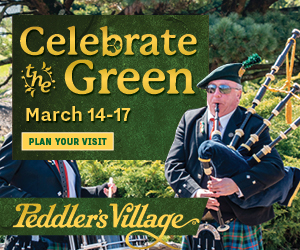Resolutions are a dime a dozen this time of year — overused, clichéd, often empty. The word “resolution,” however, means “a firm decision to do or not to do something” or “the act of finding an answer or solution to a conflict or problem.” LGBT older adults face significant health disparities and have historically been
underserved by and/or experienced discrimination by aging-services providers. As Pennsylvania ushers in a new gubernatorial administration in 2015, there is an unprecedented opportunity for resolution and advocacy for LGBT older adults in our communities.
“By the year 2020, the year of perfect vision, the old will outnumber the young.” — Maggie Kuhn, Gray Panthers founder
Available statistics confirm Kuhn’s prognostication. According to the Philadelphia Corporation for Aging’s report “Looking Ahead: Philadelphia’s Aging Population in 2015,” the number of people age 60 and older in Pennsylvania is expected to grow by 37 percent — from 2.4 million in 2000 to 3.2 million in 2020.
The question is, will LGBT older adults be included in the count?
LGBT older adults remain a largely invisible population within aging services in Pennsylvania. Many older adults in our state rely on the aging-services network for a range of supports, including meals on wheels, senior-center programs and in-home services. Many LGBT older adults need and could benefit from these services. However, little is known about whether or not LGBT older adults are actually utilizing them, because the Pennsylvania Department of Aging does not collect data regarding sexual orientation and gender identity.
In 2013, the New York State Office on Aging began asking LGBT-inclusive questions and collecting data within its aging-services network. As cities and states approach the statistical projections of 2020 at 21st-century speed, the reality is that state plans on aging across the country — but particularly in states such as Pennsylvania, which has one of the highest populations of adults over 60 — must adapt aging services to be more inclusive.
Aging-services providers are grappling with the challenge of serving a multi-generational “older adult” demographic. Many local organizations want to serve LGBT older adults and to do so respectfully and competently. However, local organizations also lack resources for training, outreach and program development to do so.
Without data, state and local resources cannot be targeted. Yet, that data cannot be collected until the state Department of Aging recognizes the need and includes collection of data regarding sexual orientation and gender identity throughout their systems. This is not a chicken or egg proposition. We know that data collection is key. We know that inclusion of these data points is a first step in this process. We know that with data and information flow resources and services.
The burden is not on the state or aging-services system alone. The LGBT community is in a position to impact how aging services will look in the future. LGBT elders, and those who provide care and support for them, must demand to be counted. As a new generation ages, there is enormous potential to channel lifetimes of activism to impact what aging services will look like now and for future generations.
Older generations of LGBT individuals have often remained silent due to lifetimes of stigmatization and discrimination. The MetLife Study of LGBT Baby Boomers found that only 10 percent of those surveyed were fearful of discrimination and attributed this shift to the fact that, unlike the generation preceding them, Baby Boomers are an “activist generation,” less inclined to remain silent and more inclined to advocate for inclusive services.
Collecting data is a start, but then what? The resolution to ask must not be an empty one. We must hold local and state service providers accountable for how that data is used. Advocacy is needed in Harrisburg, but it is also needed on the ground in Philadelphia’s neighborhoods. LGBT older adults’ voices need to be counted in senior centers, in adult day programs, in nursing homes.
LGBT communities have seen historic shifts in recent years. Advocacy to add a few questions to state-mandated forms may not be as glamorous as a Supreme Court victory. However, it is critical to creating a system that acknowledges the existence of LGBT elders. It has implications not just for those who are “old” but for LGBT individuals of all ages.
We are all aging.
We must demand to be counted, now and in the future.
This is not a resolution. This is resolution.
Megan C. McCoy, MSS, MLSP, is director of grant research and development at Center in the Park, a nationally accredited senior center in Philadelphia, and is co-chair of the program committee of the LGBT Elder Initiative. The LGBTEI, headquartered in Philadelphia, fosters and advocates for services, resources and institutions that are competent, culturally sensitive, inclusive and responsive to the needs of LGBT elders in the Delaware Valley and beyond. To comment on this article, suggest topics for future articles or for more information, visit www.lgbtei.org or call 267-546-3448 and watch for “Gettin’ On” each month in PGN.
